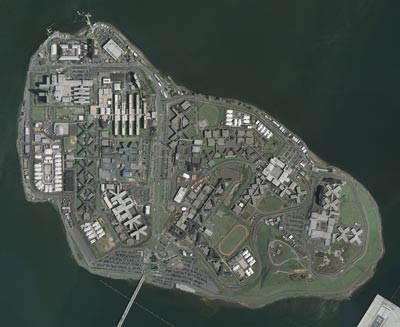
New York City’s Rikers Island complex is one of the most notorious jails in the country. Located on a small island in the East River, in the flight path of LaGuardia Airport, Rikers is known for staggering rates of inmate violence, rape, abuse of mentally ill inmates, and one of the highest national rates of solitary confinement. Though the complex has been the subject of numerous lawsuits and exposés, including a multi-part New York Times series this year on the appalling treatment of mentally ill inmates, it remains wracked by brutality and chaos.
In a scathing report released Monday, the U.S. Attorney’s office for the South District of New York railed against the treatment of adolescent inmates at Rikers, some 51% of whom suffer from some form of mental illness. These 16- to 18-year-old offenders are routinely subjected to physical abuse at the hands of both Department of Corrections officers and other inmates. In a statement, Manhattan U.S. Attorney Preet Bharara referred to the adolescent facilities at Rikers as “a place where brute force is the first impulse rather than the last resort; where verbal insults are repaid with physical injuries; where beatings are routine while accountability is rare; and where a culture of violence endures even while a code of silence prevails.”
Based on interviews with inmates plus hundreds of thousands of pages of investigative files, training materials and disciplinary records, the report is filled with disturbing details. Teen inmates suffered 22 jaw fractures in the first five and a half months of 2012, and 239 head injuries between June 2012 and July 2013. One officer was involved in 76 use-of-force incidents over a six-year period and was disciplined only once during that time. Broken noses, fractured limbs and lacerations requiring stitches are routine, as is the practice of confining those who break jailhouse rules to punitive segregation—23 hours in an isolated cell that is essentially identical to solitary confinement.
The “systemic” problems at the jail are due, in large part, to a lack of training, oversight and accountability. Officers at Rikers have inadequate training in managing adolescents (particularly those who suffer from mental illness), are rarely disciplined for inflicting physical violence on their teenage charges, and often fail to conduct investigations of use-of-force incidents. Even more alarmingly, the report found that the use of force by corrections officers was particularly common in areas without video surveillance cameras—and that 30% of the surveillance footage that should have been available was “missing.”
To address what Bharara called a penal environment “inspired by Lord of the Flies,” the federal attorneys recommended significant reforms to almost every aspect of how young offenders are treated. These include a zero-tolerance policy for failure to report use of force, installing more video cameras, and moving all the youth inmates to a facility off the island that would be supervised by better-trained guards. Now that the report has been delivered to the office of Mayor Bill de Blasio, the city has 49 days to respond to the findings and to present its plan for improving the treatment of New York’s juvenile inmates.
Our most important fundraising appeal of the year
December is the most critical time of year for Truthout, because our nonprofit news is funded almost entirely by individual donations from readers like you. So before you navigate away, we ask that you take just a second to support Truthout with a tax-deductible donation.
This year is a little different. We are up against a far-reaching, wide-scale attack on press freedom coming from the Trump administration. 2025 was a year of frightening censorship, news industry corporate consolidation, and worsening financial conditions for progressive nonprofits across the board.
We can only resist Trump’s agenda by cultivating a strong base of support. The right-wing mediasphere is funded comfortably by billionaire owners and venture capitalist philanthropists. At Truthout, we have you.
We’ve set an ambitious target for our year-end campaign — a goal of $250,000 to keep up our fight against authoritarianism in 2026. Please take a meaningful action in this fight: make a one-time or monthly donation to Truthout before December 31. If you have the means, please dig deep.